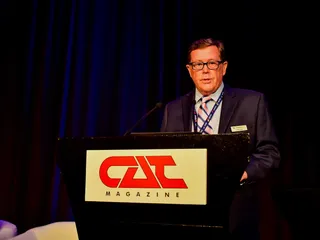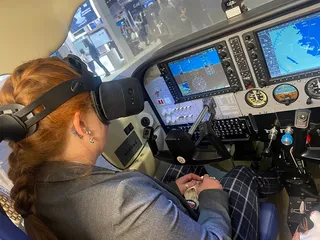Early FY24 DoD Budget T&S Highlights
Contact Our Team
For more information about how Halldale can add value to your marketing and promotional campaigns or to discuss event exhibitor and sponsorship opportunities, contact our team to find out more
The Americas -
holly.foster@halldale.com
Rest of World -
jeremy@halldale.com

The Pentagon’s fiscal year 2024 budget has completed the first leg of the often-Byzantine legislative journey to enactment.
This June 30, the House Armed Services Committee filed its 672-page report and advanced its version of the FY24 National Defense Authorization Act to the wider House of Representatives for a vote this month. A week before, the Senate Armed Services Committee passed by its version of the NDAA bill and forwarded the legislation to the full US Senate. An executive summary of the bill was published June 23.
The FY24 defense bill will undergo further deliberations as part of the budget authorization and appropriations processes in the Senate and House. The bill will also certainly be the subject of conferences on its journey to President Biden’s desk for signature, conceptually not later than September 30, with the US government fiscal year beginning October 1.
The FY2024 NDAA addresses programs and policies across the defense enterprise. Of significance to MS&T, the SASC and HASC members and their staffs remain focused on advancing the US services’ training readiness in and beyond the budget outyears. To manage expectations, the two committees are not only suggesting funding levels for relevant program elements and, as significant, are highlighting their concerns about current and near-term readiness shortfalls.
Opportunities exist for simulation and training industry team to continue to provide, or initially deliver, systems and other materiel, and training services to US DoD. Extracts from the SASC and HASC reports are provided here to gain glimpses of the committees’ breadth and scope of influence in the defense legislative process.
One Learning Technology Investment
The HASC remains focused on wisely investing in technologies across the defense learning enterprise. In one instance, the report notes HASC’s awareness “of Air Force initial pilot training shortfalls and remains deeply concerned that insufficient strategies and courses of action are currently being implemented year over year to address the ongoing problem. The committee notes that Air Education and Training Command (AETC) has tried several initiatives to increase production with unsuccessful results. Although AETC has adopted virtual, augmented, and mixed-reality technologies for ground training activities, AETC’s flight training program still relies largely on legacy technologies and antiquated methodologies.” Of significance, the committee’s NDAA report added, “Based on existing and mature available technology, the committee is strongly convinced AAR [Airborne Augmented Reality] can increase pilot training production capacity, reduce pilot production time, and use fiscal resources more efficiently without negatively impacting student flying hours.” Accordingly, HASC is recommending an increase of $10 million for AAR for pilot training activities (Program Element 0207701F).
Other Aviation Focal Points
HASC’s report asserted that fielding the T–7 Redhawk is critical to improving the safety, quality, and throughput of Air Force pilot training – as recently commented on by MS&T. “The committee is concerned about schedule delays to the T–7 program, particularly given the rapid deterioration of the T–38 fleet and the urgent need for a more relevant trainer for pilots of next generation aircraft,” the report reads, in part, and directs the Air Force Secretary “to brief the HASC not later than March 1, 2024 on options to expedite procurement and fielding of the T–7 aircraft and associated ground-based training systems.”
The HASC also continues to support the Air Force Agility Prime program’s efforts to invest in and deploy low-cost, safe, and reliable eVTOL technologies for light mobility missions. While the committee requested an addition report from the service on the program, it also suggested increasing the program’s funding by $5 million (Program Element 0604009F).
Ground Warfare Interest Points
The Army’s Soldier Virtual Trainer (SVT) program is intended to integrate several individual soldier and squad training capabilities, to include Weapon Skill Development, Joint Fires Training and Use of Force Training, into a single capability to achieve individual and squad collective training tasks . The HASC report notes while SVT is under development, the committee understands the Army’s sustainment program for existing, legacy, small arms simulation Engagement Skills Trainer (EST) systems is no longer funded; indeed, the warranties for Army EST systems will begin to expire in 2023, with full expiration in 2024.
Of great interest to the broader small arms synthetic training industry, the report notes “there are current service providers that have next generation simulation small arms synthetic training systems that utilize human performance optimization, biometrics, and robust shooter data collection and analysis that can support all current Army small arms simulation qualification requirements today.” The HASC encourages the Army to examine these systems to help fill the emerging gap in its small arms qualification requirements.
Training to Evolving Threats
For its part, the SASC is eyeing evolving threats, from hypersonic to directed energy, and accordingly “directs a briefing to assess the potential need for the expansion of threat environment training through multi-domain operations training ranges.”
The SASC is also supportive of DoD security partnerships around the globe. Look for increases in funding to support bi-lateral and multi-lateral training with allies and partners in vital areas of responsibility as these partnerships evolve and mature with the emergence of China as a peer-competitor, and the continued challenge of Russia to NATO members in Eastern Europe.
Following the FY24 DoD Budget
Pressures will be exerted on the Pentagon’s budget as it winds its way through congressional committees and conferences. Any funding reductions in the DoD budget topline will certainly trickle down to training readiness program elements. Similarly, evolving threats and maturing alliances will create new or modified pressures on the services to evolve the way they train to meet these dynamics. MS&T will continue following and analyzing the FY24 DoD budget through this legislative cycle.


